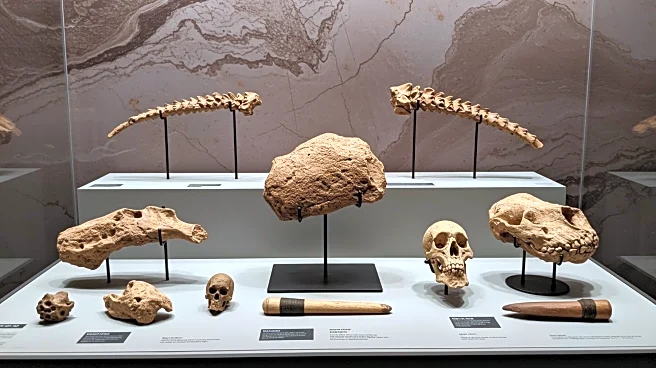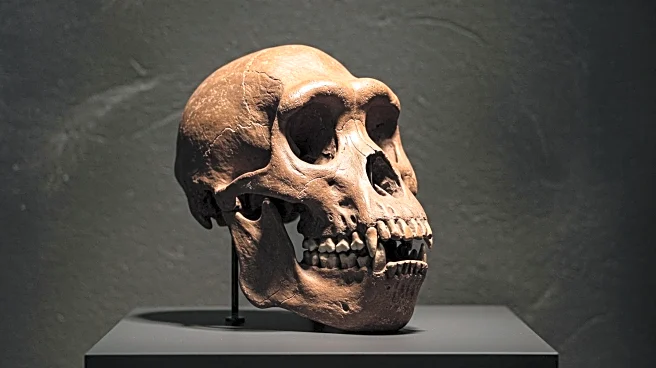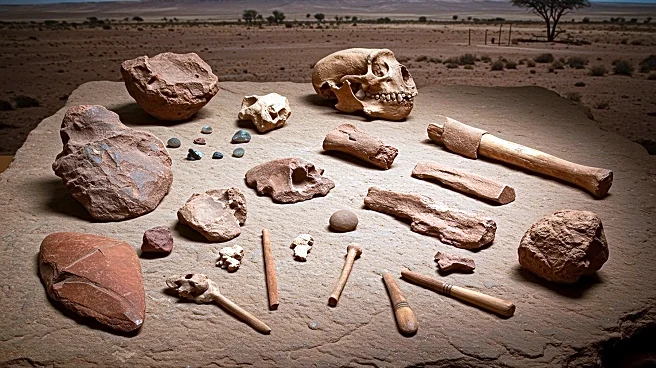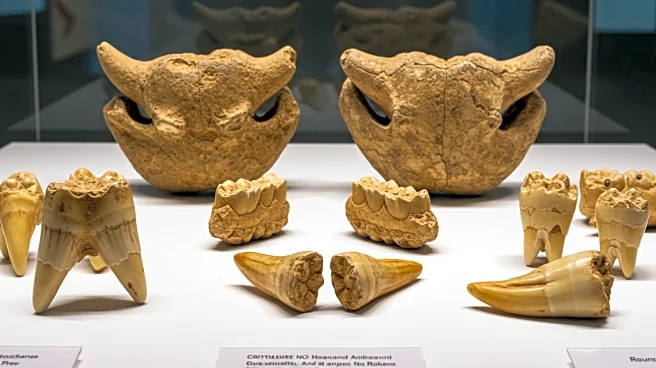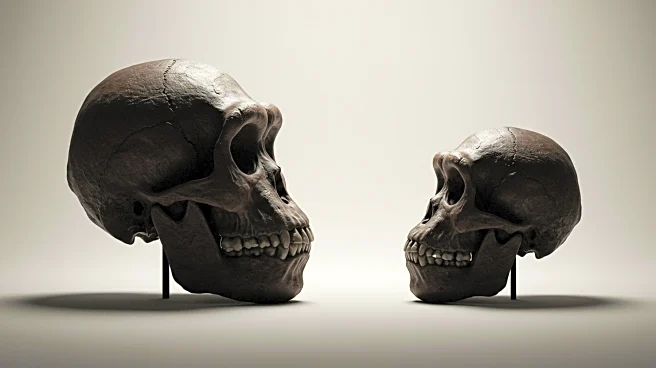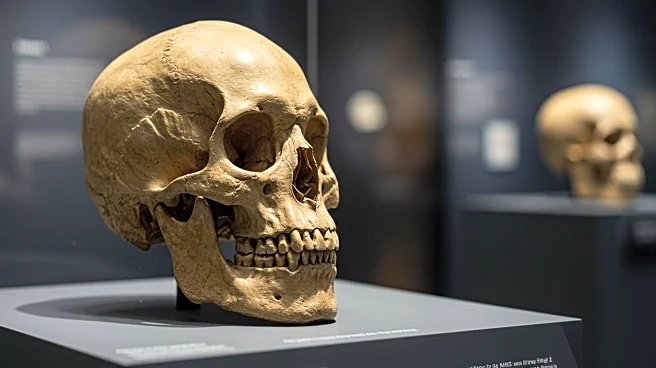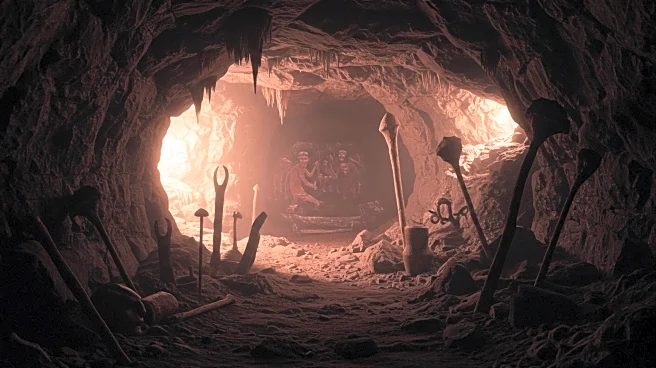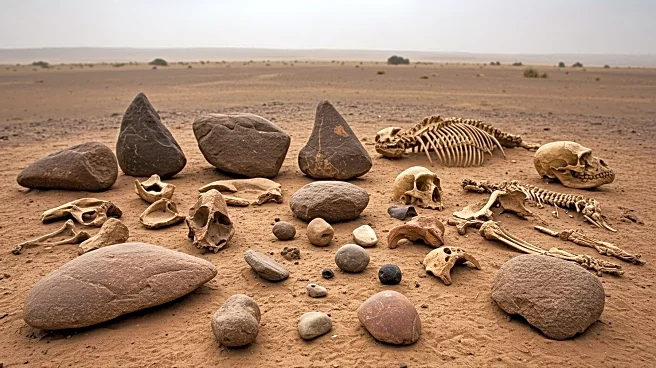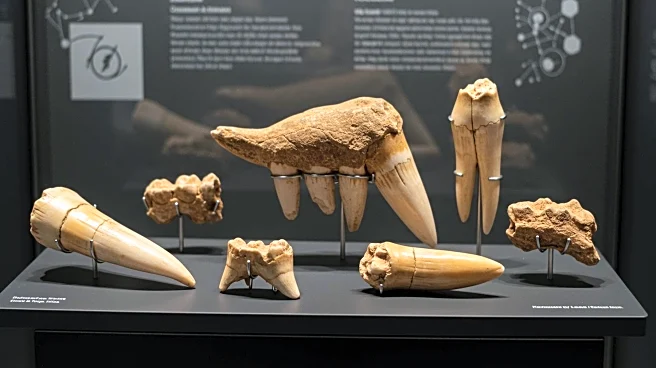What is the story about?
What's Happening?
A team of international scientists has uncovered new fossils in Ethiopia that suggest Australopithecus and the oldest specimens of Homo coexisted between 2.6 and 2.8 million years ago. The discovery includes a new species of Australopithecus, distinct from the well-known Australopithecus afarensis, famously represented by 'Lucy.' The Ledi-Geraru Research Project, led by Arizona State University, has revealed the oldest member of the genus Homo and the earliest Oldowan stone tools. The findings challenge the linear view of human evolution, suggesting a more complex, bushy evolutionary tree. The research emphasizes the importance of finding additional fossils to understand the differences between Australopithecus and Homo.
Why It's Important?
This discovery is significant as it reshapes the understanding of human evolution, indicating that multiple hominin species coexisted and interacted. It challenges the traditional linear model of evolution, suggesting a more complex evolutionary process with various life forms that went extinct. The findings could lead to a reevaluation of the evolutionary timeline and the environmental conditions that influenced human development. This research highlights the importance of continued fossil exploration to uncover more about our ancestors and the evolutionary paths that led to modern humans.
What's Next?
The research team plans to examine the tooth enamel of the fossils to learn more about the diet and lifestyle of these early hominins. Questions remain about whether the early Homo and the new Australopithecus species competed for resources or shared them. Further fossil discoveries are needed to provide more information about the interactions and evolutionary paths of these species. The ongoing research aims to fill gaps in the understanding of human evolution and the environmental factors that shaped it.
AI Generated Content
Do you find this article useful?
